Have you ever wondered how ink was first made? How did the ancient civilizations make those beautiful colored inks? What were the pigments and dyes used in making inks? Many of the colorful dyes that were used by ancient civilizations came all from the natural world. These early pioneers created ink using fine carbon particles and natural pigments combined with plant gum to acts as a binding agent.
Inks have a large impact on our lives! It is essentially a fluid substance containing a pigment or dye either in solution or suspension, or both that can be used with a pen to mark letters or characters. I have been making my own inks for quite some time now. Making ink is just another way to enjoy the beauty and excitement of our natural world. It is a fun and safe project to get the little ones involved too. Traditional ink sources include flower petals and tree bark, and though fruit sources are less traditional, they also make for useful ink such as berries.
Making ink from berries can be an expensive affair if you buy them from your local grocery store or farmer’s market. The best and more fun option is to go foraging for berries to seek and find a delicious array of berry options in your backyard or further afield. Foraging is a great way to reconnect with nature in a really positive way. Foraging is a way to return to our roots! Fostering this connection with nature is essential in a time when everything is so convenient.
The process of making sustainable and biodegradable ink from berries that are edible and non-poisonous is very straight forward that doesn’t require the use of any special equipment.
Foraging
Foraging is an inherent trait of human nature, eclipsed by the agrarian society! There’s plenty of food growing in cities depending on where you live and the time of year. Be sure these areas have not been sprayed with toxic pesticides or herbicides if you decided to tickle your taste buds while collecting berries for ink making. If you are unable to confidently identify a plant, then use reference books to identify them or forage with someone who is knowledgeable. It is a fantastic way to learn from the experience of others.
Elderberries (Sambucus nigra)
To identify an Elder bush/tree read here https://www.lostincolours.com/how-to-make-twig-pens-and-brushes/. Elderberries can be harvested in the late summer months ( July -Autumn). You don’t require much, a small bunch of elderberries will provide you with enough ink to last for long. Elderberries are toxic when consumed raw.
Black Mulberries (Morus nigra)
All mulberry trees produce berry-like clusters of edible fruit. The mulberry leaf is heart-shaped, and the tops of the leaves are slightly rough in texture. The red mulberry leaf is lobed has a serrated edge.
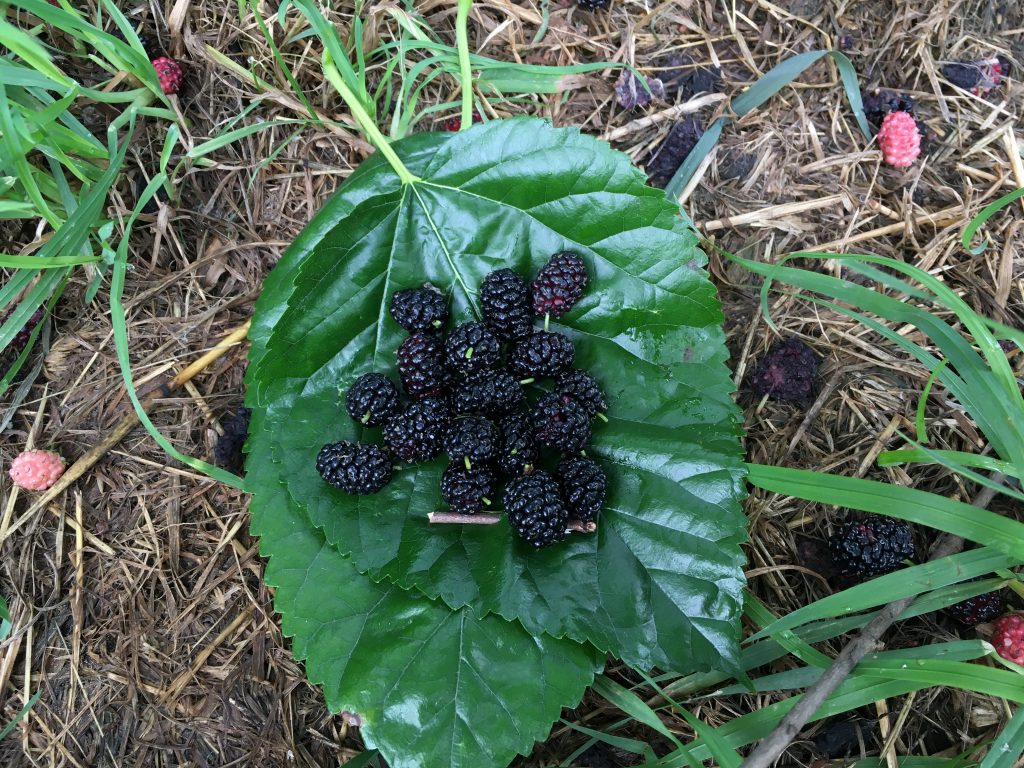
Foraged while riding to the countryside, June 2020
Redcurrants (Ribes rubrum)
Check the foliage for single, lobed leaves that grow on alternate sides of the stem. The leaves of the redcurrant plant are a deep shade of bluish-green and are shaped a bit like a maple leaf. Identify redcurrants by their translucent red color and the many minute seeds inside each berry. The berries on a redcurrant string ripen all at once, as opposed to other types of currants that ripen from the top of the string, down.
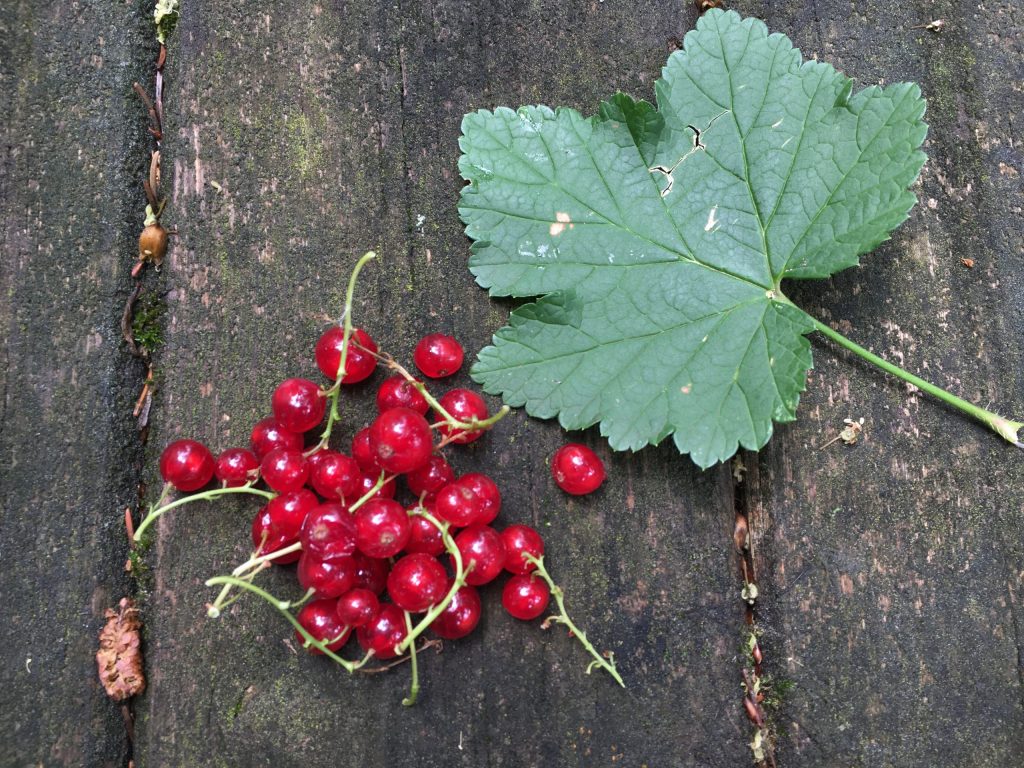
Foraged from our communal backyard, June 2020
Raspberries (Rubus idaeus)
The most common raspberry variety, and the easiest to identify, is the red raspberry. Raspberry leaves bear three to five leaflets that spread apart, the largest one being in the center. The leaves have a serrated edge, and the bottom center spine has small hair-like thorns. The stems or canes are covered with thorns, smaller and more flexible than that of blackberries and other thorny shrubs. A whole raspberry is made up of several small berries. Raspberries are the only bramble berry type that pulls free of the core; the center will remain hollow.
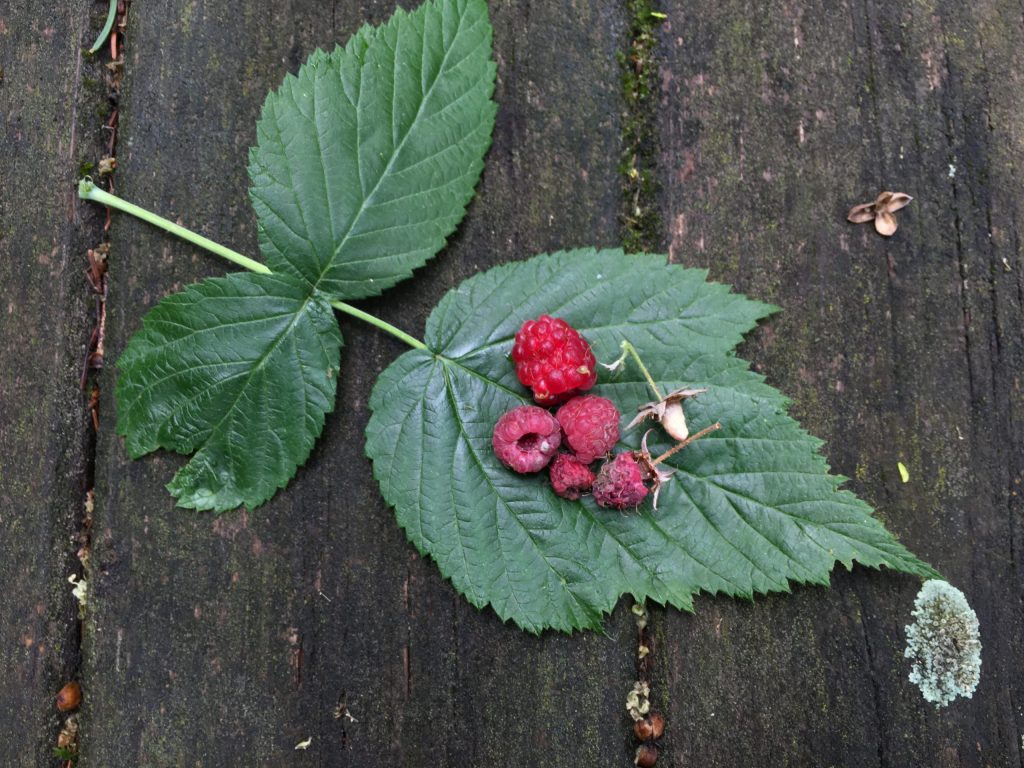
Foraged from our communal backyard, June 2020
Staghorn Sumac Berries (Rhus typhnia)
Staghorn sumac grows to about 15 feet tall and has dark green, compound pinnate leaves that have a serrated edge. Tiny green flowers in the spring are insignificant but are later replaced by large cones of fuzzy crimson berries that remain throughout the winter. Bark on older wood is smooth and grey to brown. I foraged sumac berries recently from the countryside that was still intact from last year.
Beware of the Poison sumac, which causes skin rashes. It is a small shrubby plant with pinnate leaves that are not serrated.
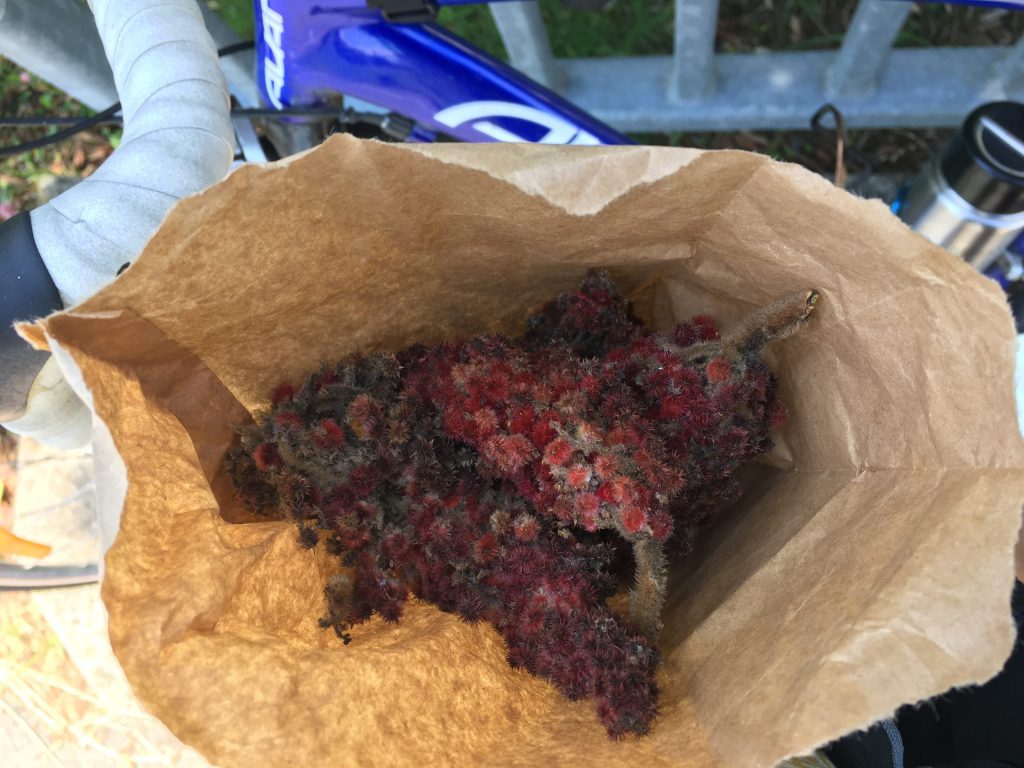
Fuzzy velvety sumac berries, June 2020
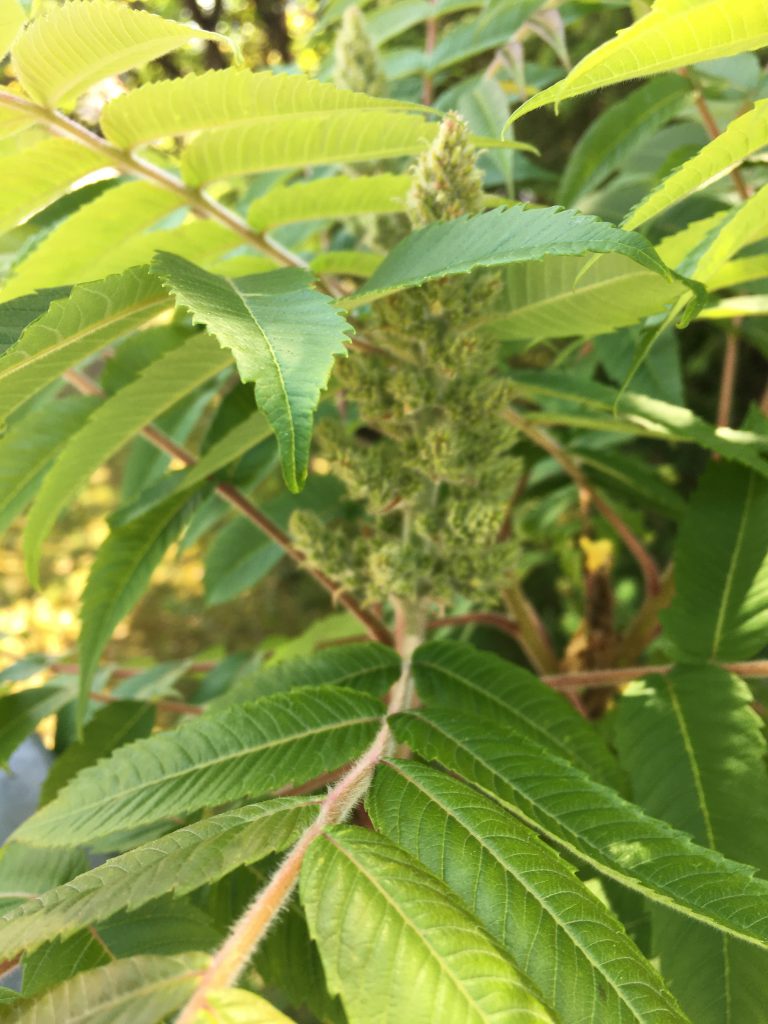
Spring flowers of staghorn sumac, June 2020
The process of ink making
- Put a small number of berries in the mortar to be squished and their pigment-rich juice to be collected for making ink.
- Crush and grind each berry carefully, including the skin, where most of the pigment is present to release a maximum amount of pigment.
- Transfer the mashed fruit and juice to a non-reactive pan for cooking.
- Let the pulp and juice of berries simmer on low heat. The heat applied not only helps to preserve the berries but it thickens and darkens the liquid.
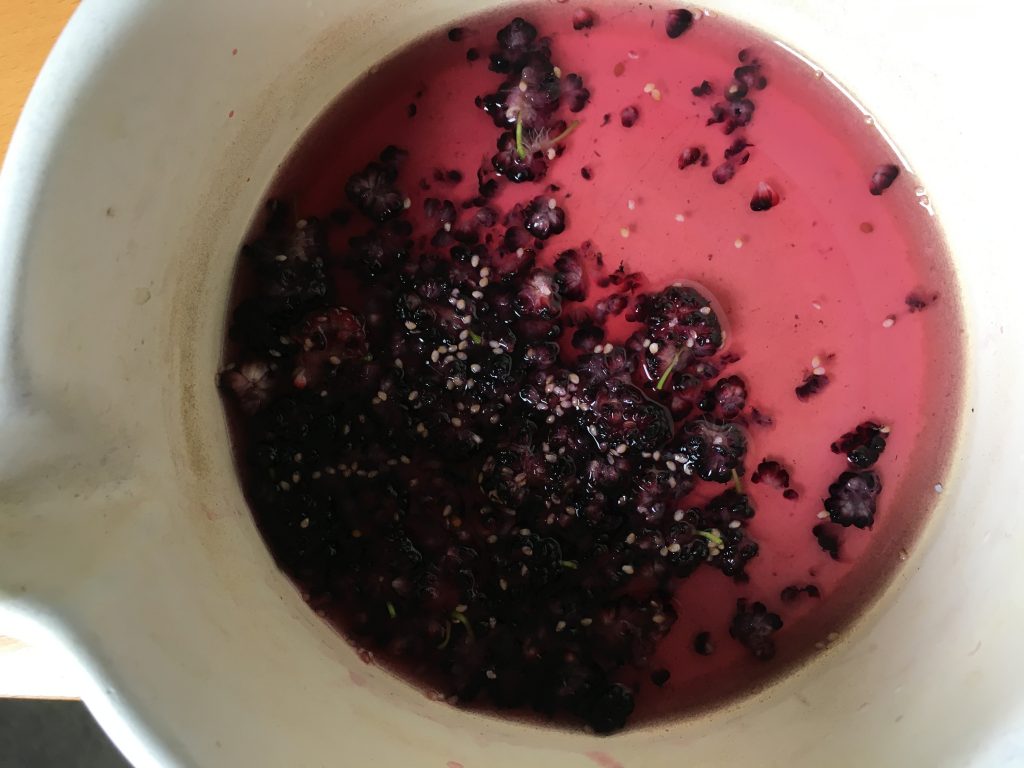
Mulberries simmering on low heat
- Once the pot has cooled down the liquid can be filtered using a muslin cloth, fine sieve, or simply a coffee filter. Filter twice if organic matter is still present. The ink obtained is incredibly smooth and has a beautiful color to it.
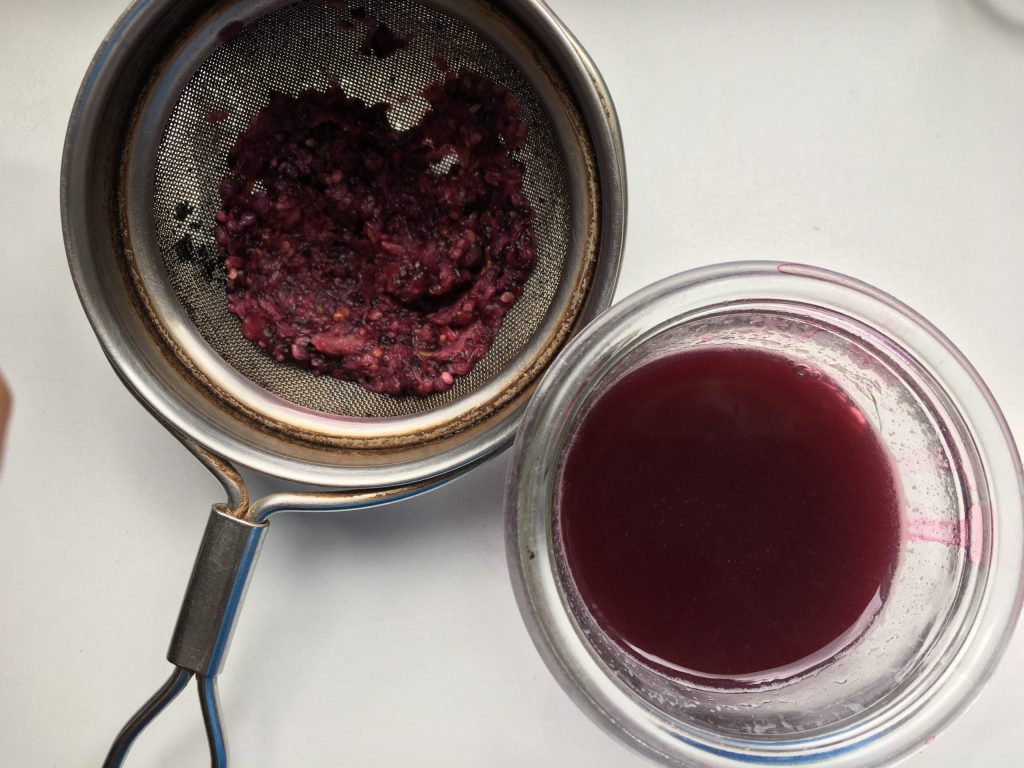
Mulberry ink
- The ink can also be thickened by the addition of gum arabic to it.
The science behind the ink making process from fruit
Fresh fruits are made of living, breathing cells. Even when the fruit is picked from a plant, its cells are still alive and continue to carry on metabolic processes like absorbing oxygen and releasing carbon dioxide. But when the fruit is cooked, the cells die and undergo dramatic changes that cause them to leak water and soften. The longer you heat the fruit, the more softening and water loss occurs; in other words, the more its texture changes. Simmering at lower temperatures causes the firm, insoluble substances (hemicelluloses and pectic substances) to break down, converting to water-soluble pectins, and dissolve. The fruit becomes soft and tender.
Ink from Berries
Being organic in nature some pigments in berry inks oxidize rapidly. For instance, inks from mulberries and elderberries have a beautiful reddish-purple hue, but within seconds, they dry to a rich purple color.
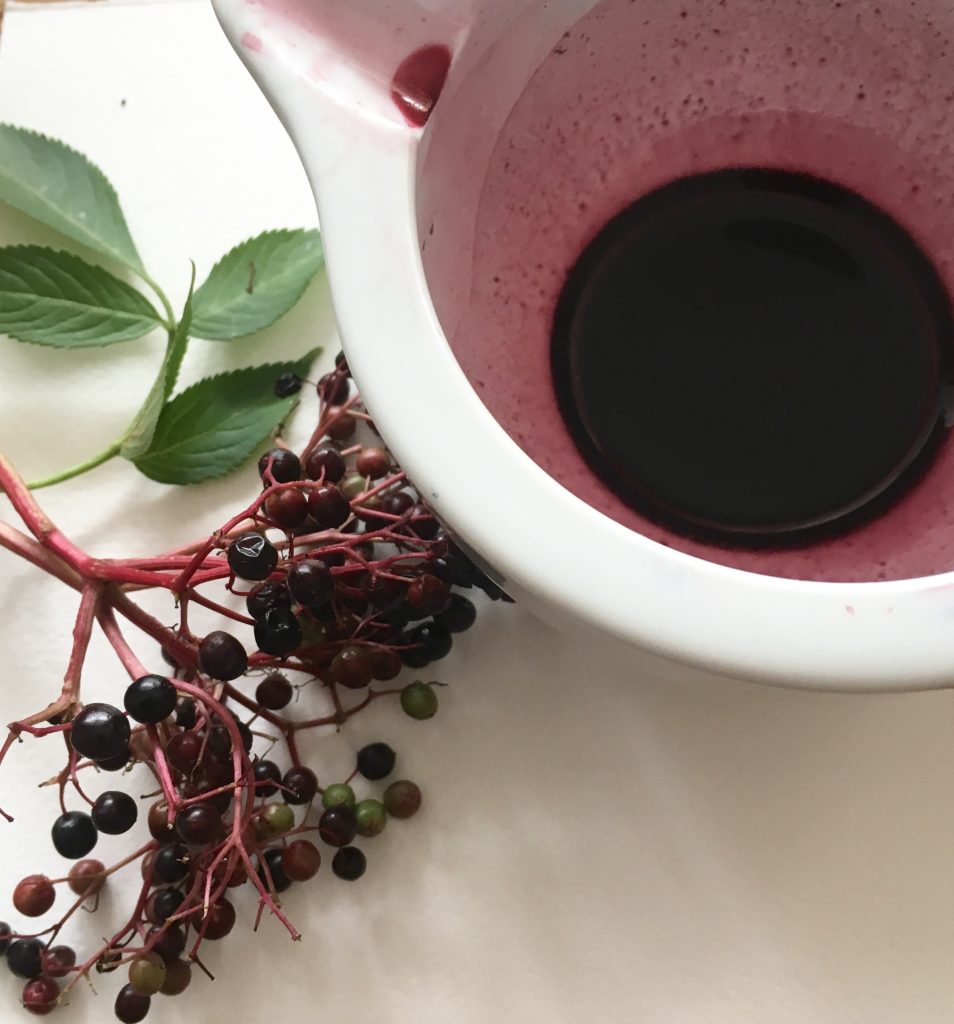
Rich red juice of elderberries
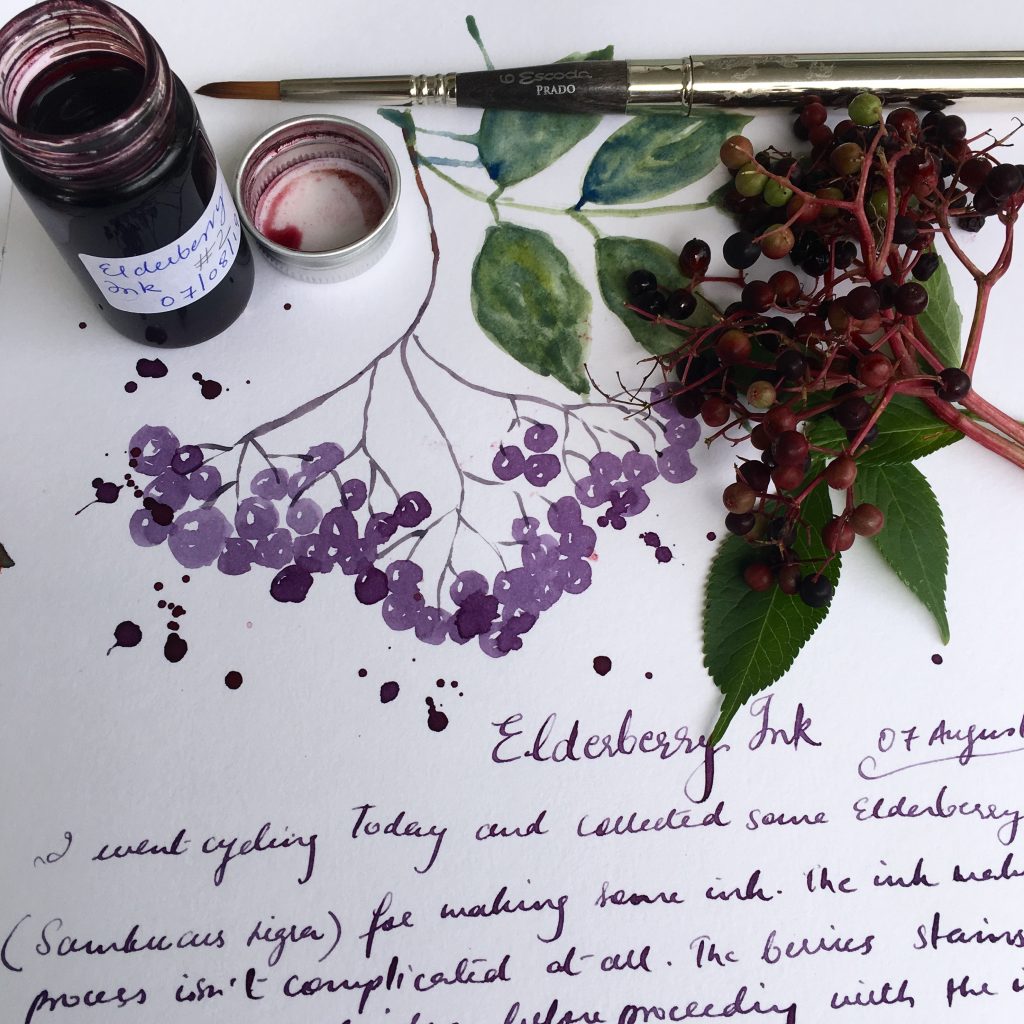
Oxidized elderberry ink
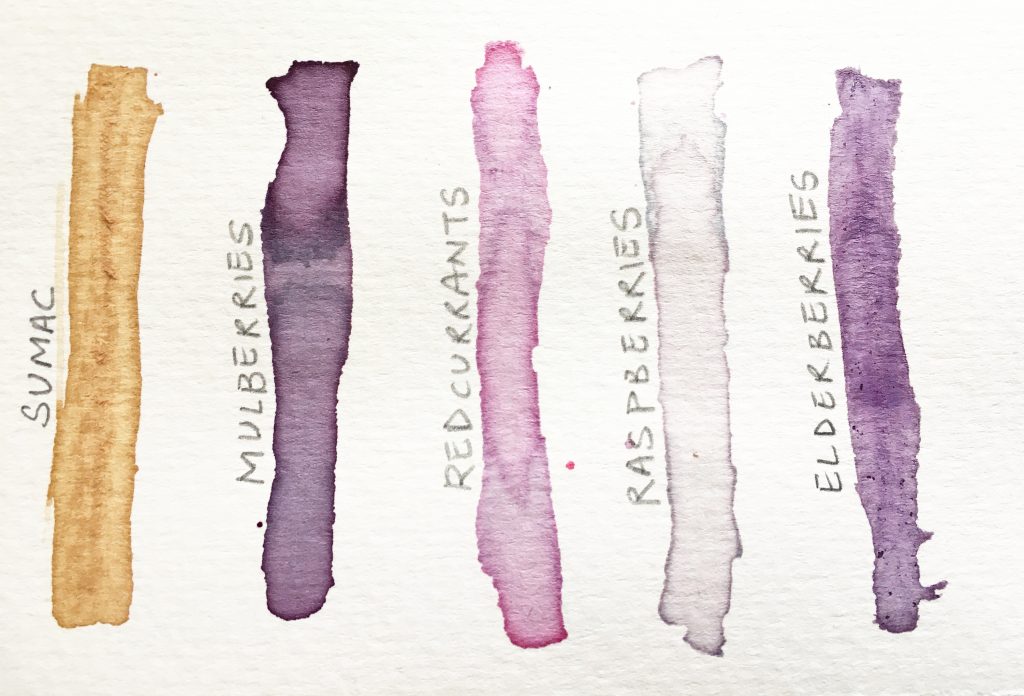
Berry inks
Experiment with mordants
Out of curiosity, I also experimented with changing the native color of inks by using mordants.
Elderberry ink
The native color of elderberry ink has a reddish hue that changed to an intense purple on reaction with alum. In contrast, the addition of iron mordant made the color dull blue.
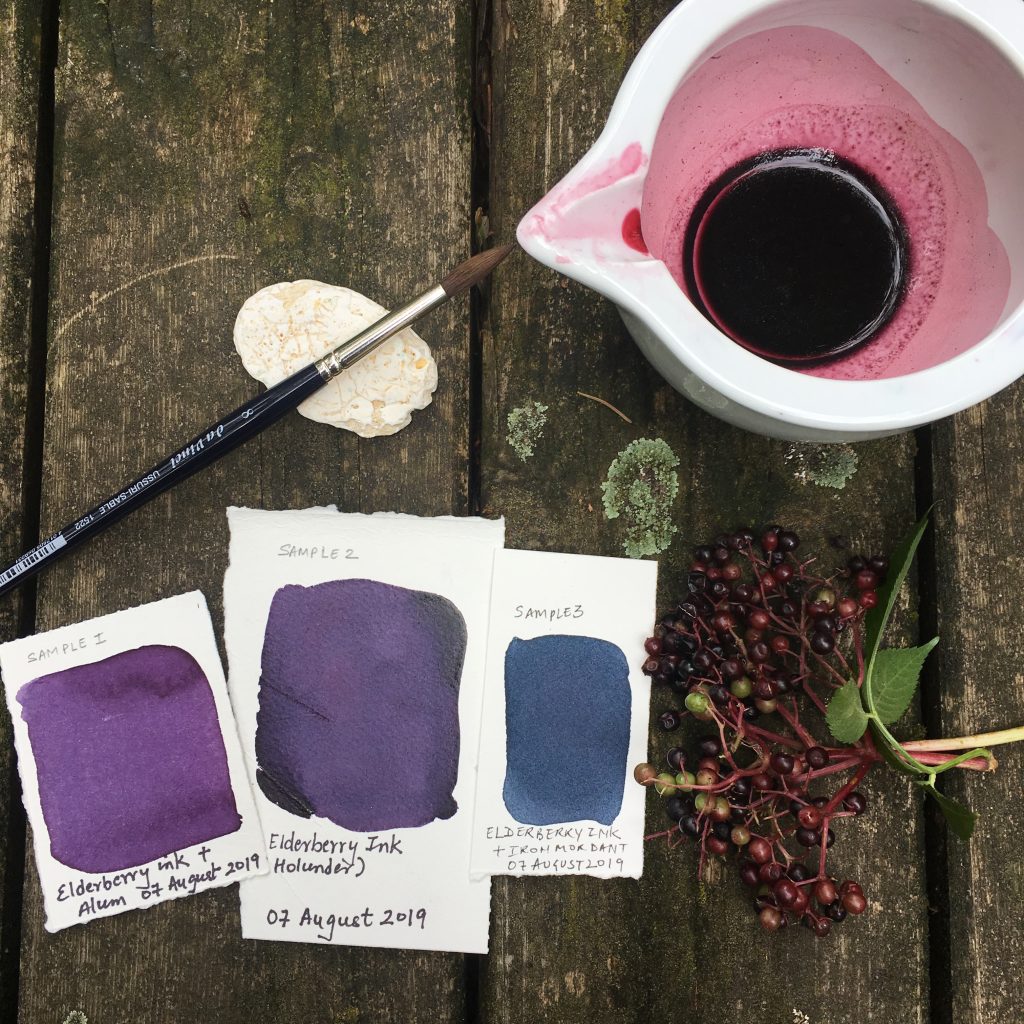
Experiment with mordants
Mulberry ink
I did a similar experiment using mulberry ink. The addition of iron mordant changed the reddish hue of the mulberry ink to a beautiful soft grey. In contrast, alum changed the native color to an intense purple.
It was a fun little process to experiment with mordants but I prefer using inks in their native colors!
Using your ink and storage
- Ink made from berries will not be bright and saturated as store-bought inks, but they have an organic beauty of their own.
- Berry inks should always be kept covered and sealed in a jar to keep them from growing mold or turning rancid, the addition of a few drops of alcohol or salt helps in preserving the ink.
- Berry inks are much lighter and may require a repeated application of layers to achieve an intense hue.
- They have varying degrees of lightfastness, i.e, some of them fade over time and much faster when exposed to sunlight.
- They are a joy to use as either as a writing ink and/or drawing ink.
Give your creative work a handmade edge with inks that you made yourself from locally foraged raw and sustainable resources!
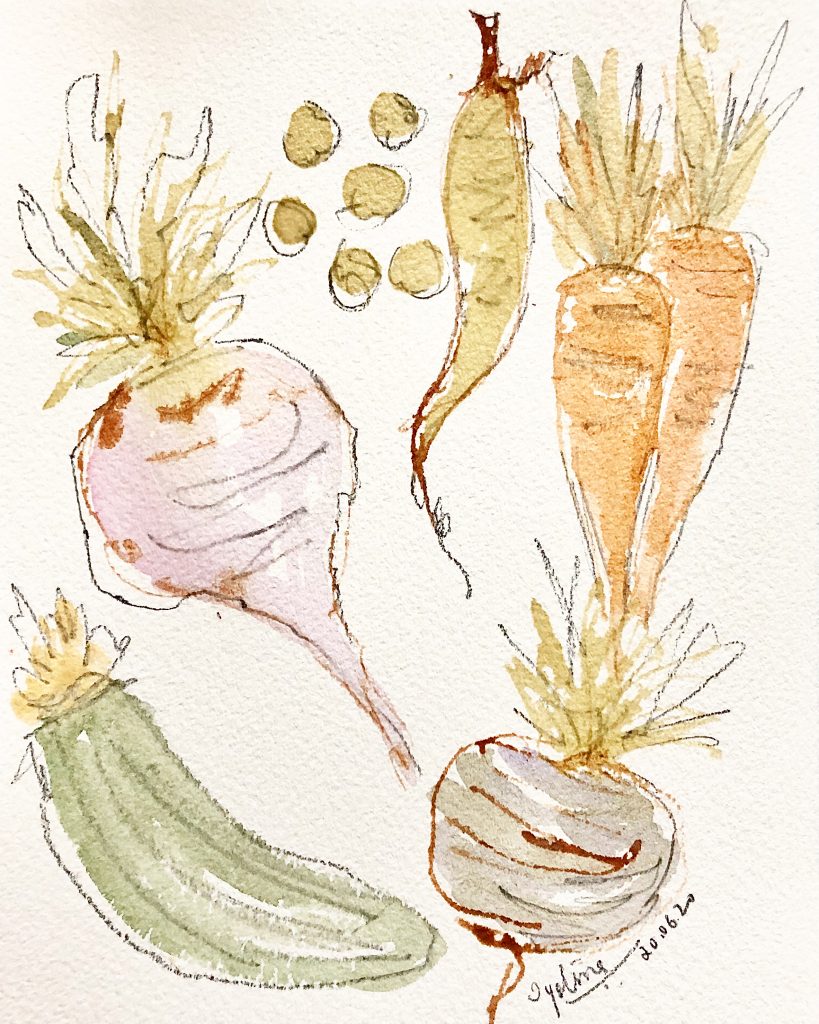
Illustrated using a variety of berry inks
Capture the colors of your landscape by making natural inks.
Online Course: Making Natural Inks
Suggested readings:
- https://visual.ly/community/Infographics/history/history-ink
- https://www.jstor.org/stable/1147356?seq=1#metadata_info_tab_contents
Disclaimer: Safe, sustainable, and responsible foraging
All information in this blog is meant for educational and informational purposes only. The content represents solely my views and personal experience. Proper identification of plants is the reader’s responsibility. Never pick, eat, or even touch any wild plant without cross-referencing multiple reliable sources for positive identification. Forage with someone knowledgeable. The author does not accept any liability or responsibility for any consequences caused by foraging by relying upon the information contained within this website.
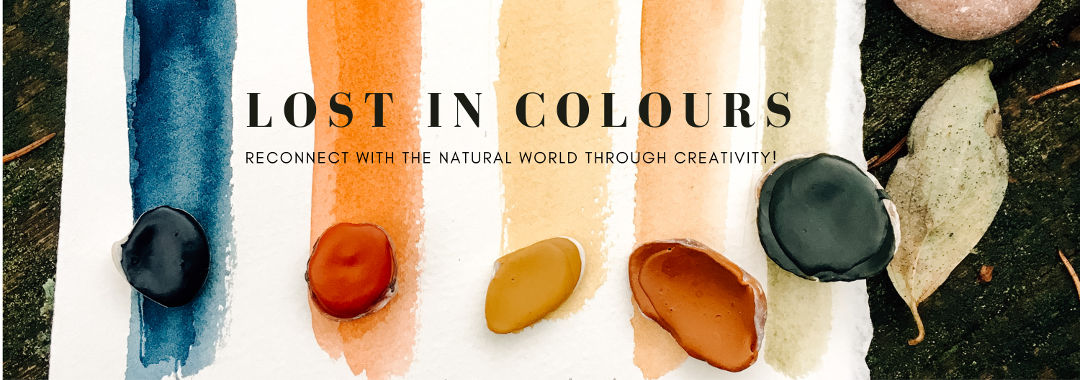

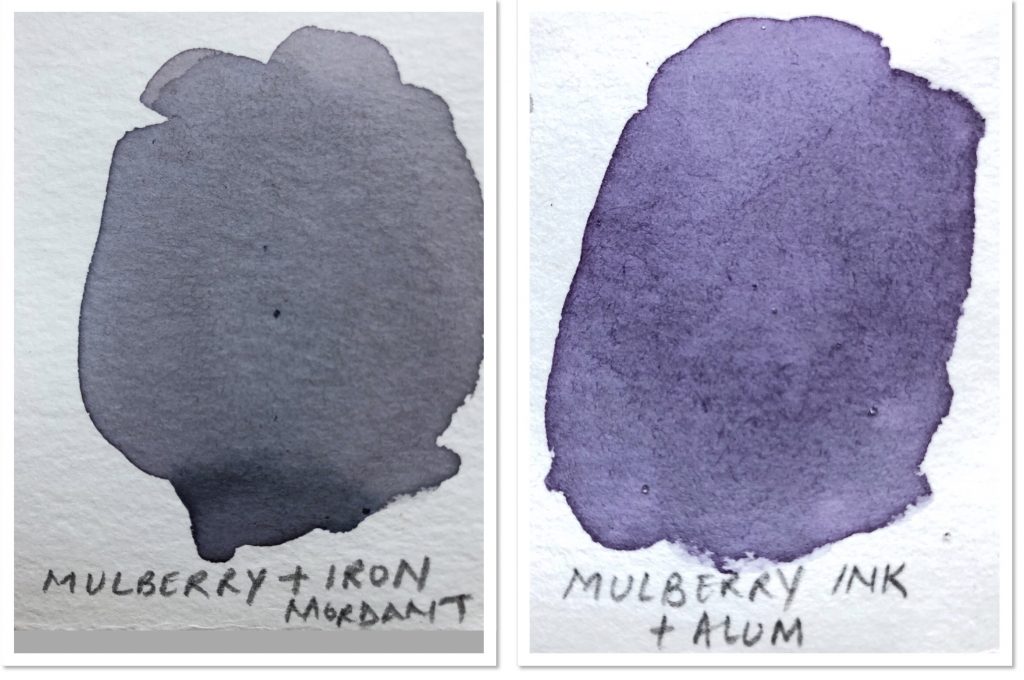
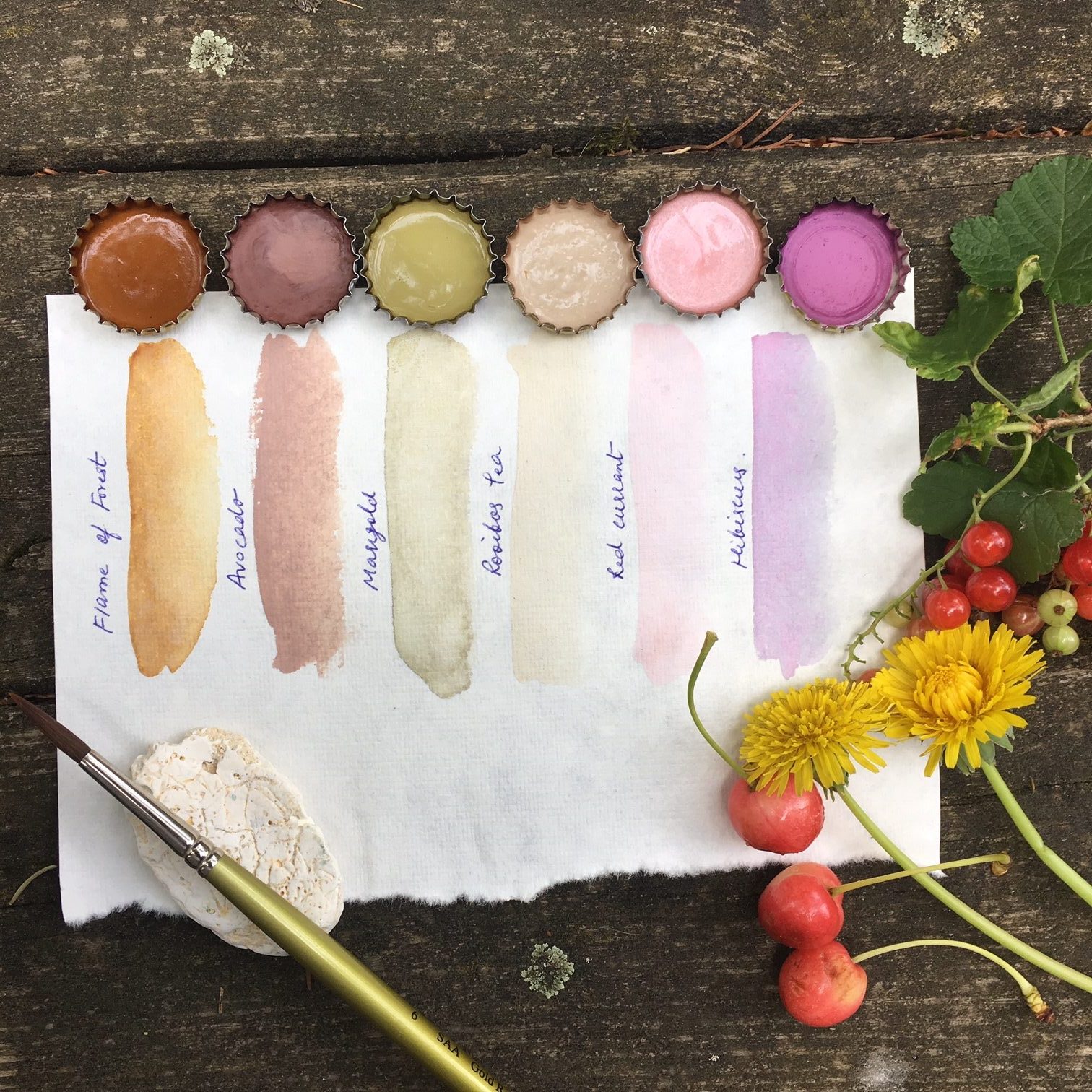
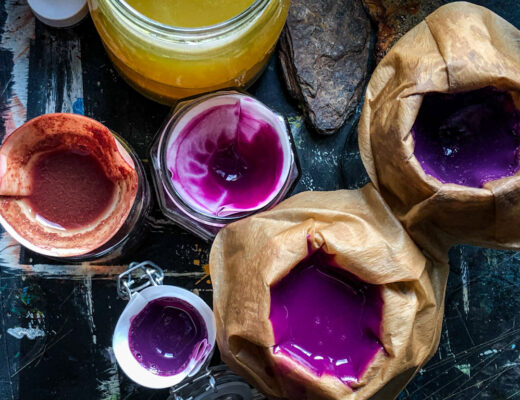
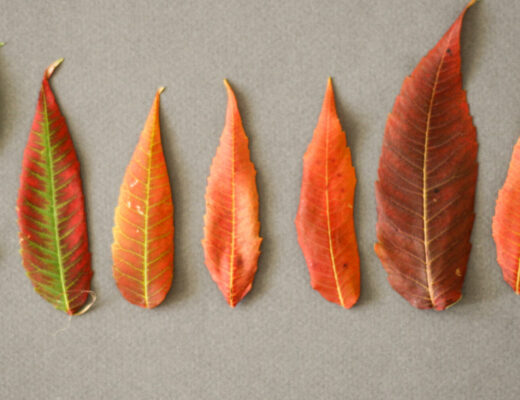
3 Comments
[…] How to Make Ink from Elderberries ~ Lost In Colors […]
[…] Making ink from Berries – Lost in Colours (Excellent; Elderflower Twig Pens/Brushes linked within too) […]
… [Trackback]
[…] Read More: lostincolours.com/making-ink-from-berries/ […]